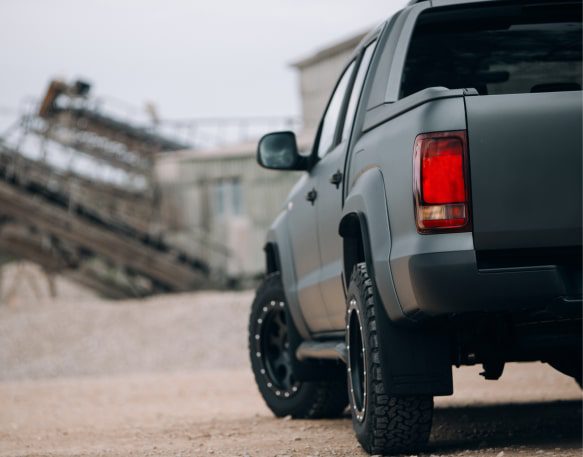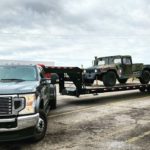
If you’re interested in starting your own hot shot trucking business, here’s how.
There are plenty of reasons why hot shot trucking is an appealing way to get started in the trucking industry. With the right hot shot business strategy, you can get to transporting commercial freight with a flexible schedule and minimal overhead costs in no time. For many truckers, hot shot trucking is a great way to begin a career as an owner operator.
But there are plenty of things you need to consider before you start your hot shot trucking business. To ensure you maximize your potential, it’s important to learn the do’s and don’ts of starting your own hot shot trucking enterprise. Once you have an idea of the right steps to take, starting your business will come with fewer risks — and more rewards.
For any owner operator, a sustainable business model starts with an understanding of your industry. In this article, we’ll get into all the basics of starting your own hot shot business: including how to get your CDL, insurance, accreditation, and more.
What is hot shot trucking?
Hot shot trucking is a type of specialty trucking that has been growing in popularity in recent years. The idea behind hot shot trucking is simple — hot shot freight needs to be delivered on a short timeline. Whether it’s a time-sensitive load for a construction project or a perishable load of food, hot shot truckers get freight from point A to point B fast.
You’ll usually need to pick up freight from a shipper and deliver it in less than 24 hours. Because hot shot trucking is so time-sensitive, there are several specific qualities that most hot shot trucks have in common. The vast majority of hot shot loads are LTL (less-than-truckload), meaning you won’t need a full-size semi-truck to transport them. Additionally, hot shot loads usually require shorter transportation times, due to the abbreviated timeframe.
In short, hot shot truckers spend most of their time getting smaller loads across smaller distances, on a quick timeline. The specific type of truck you drive is up to you — most commonly, hot shot truckers drive large pickups with a trailer hooked onto the rear. Other LTL vehicles can be used too, like vans or flatbeds.
How does hot shot trucking work?
Hot shot truckers operate in a similar way to most other owner operators. The basics of running a hot shot trucking business are just like any commercial freight carrying enterprise — except the loads are more urgent, and the vehicles are usually smaller.
As an owner operator, you’ll be tasked with finding the right load matches for your vehicle with the most economical routes. Whether you’re looking for loads on a free load board, or a subscription service, you’ll need to search for specialty loads using the specific criteria of your truck.
For new and experienced truckers alike, the DAT One load board is a great place to start — with more specialty loads than any other board in the industry, DAT is the go-to for hot shot freight. Plus, the DAT load board lets you connect with brokers and shippers via instant message. That means you can find matches, pick up loads, and drop off freight with maximum efficiency.
The DAT load board has more loads (by far) than the other load boards, which is why it’s a practical place to start your hot shot business. Plus, you’ll get access to lots of exclusive loads that are available only on DAT, or otherwise available on DAT before anywhere else. Because hot shot trucks are in such high demand, the DAT load board is also a great place to get ahead of the competition.
Is hot shot trucking profitable?
One of the reasons why hot shot trucking is becoming so popular is its profitability for truckers. As the freight industry requires more and more fast deliveries, hot shot truckers will be in high demand — so you can rest assured you won’t be out of load options anytime soon. But high supply isn’t the only thing that makes hot shot trucking profitable. The low overhead cost and flexible scheduling for your truck are major draws for hot shot truckers in today’s trucking market.
If you don’t have any experience in the trucking industry, the low entry cost of hot shot trucking makes it a great place to start. Compared to semi-trucks, hot shot vehicles are a significantly cheaper upfront investment. This means the cost of down payment, as well as overall maintenance costs and gas, can be lower for a hotshot trucker.
Of course, hot shot carriers have plenty of challenges that are unique to hot shot trucking — from tight time crunches, to perishable freight that can sometimes have high insurance premiums. Overall, though, hot shot trucking is easier to get started if you don’t have a significant financial reserve. Truck payments for industrial-sized pickup trucks usually run around $1,000 per month, less than half of what you’d pay for a semi-truck.
The cost of starting a hot shot business will vary from truck to truck, but upfront investment generally ranges between $15,000 and $30,000. This includes insurance premiums, legal fees, and registration materials. With this type of investment, it may take a year or two to pay off initial fees. Now for the good news: even though invoices are often smaller for hot shot loads, lower maintenance costs mean a hot shot driver will often make just as much net profit as a Class 8 semi driver.
How can I get my hot shot trucking license?
Getting your trucking license has registration requirements from the federal and state governments. You’ll need to understand what application materials you need, and how much time to budget for your accreditation process. Requirements can vary slightly from state to state, but all hot shot drivers will require the following steps:
- Commercial Drivers License: Any trucking career will start with a CDL (Commercial Drivers License), which is a standardized license required to operate commercial freight vehicles in the United States. To get a CDL, there are plenty of local driving courses and CDL schools that offer training programs. Your CDL only needs to be renewed after five years, but passing regular physicals and clearinghouse requirements may be necessary to stay accredited.
- MC number: The MC number allows you to transport commercial freight across state lines, which is a requirement for any interstate trucker. Hot shot truckers have the exact same MC number requirements as any other trucker — submit your application materials to the FMCSA, and get your MC registration typically within 4-6 weeks.
- USDOT number: The USDOT number is issued by the US Department of Transportation, which is another requirement for interstate truckers. You’ll need to get your USDOT number to transport freight legally across state lines, and post your USDOT and MC numbers visibly on your vehicle.
- Insurance: Insurance is no joke — but there are plenty of trucking industry services that can help you to maximize your insurance, with minimal premiums. Monthly insurance is possible, with hot shot trucks typically running $1,000 to $3,000 a month. However, per-load insurance with Loadsure is another great option. Loadsure is an insurance provider for freight carriers that helps you to insure freight with pay-as-you-go insurance contracts. Loadsure can help you avoid overpaying for upfront insurance, and it can be integrated with your DAT load board.
- State-level requirements: State-level requirements for truckers are the final step in getting your operating authority. These include IRP, IFTA, and BOC-3 registration requirements. Although these requirements need to be filled with your state’s Department of Transportation, they are almost exactly the same for every state throughout the country.
In addition to getting your CDL and trucking authority, you’ll need to set up your business to become a certified owner operator. There are lots of considerations in starting a new business — from getting your Employer Identification Number (EIN), to deciding whether you want to run an LLC or corporation.
With any authority requirements, DAT Authority for Carriers offers a fast and easy way to set up your trucking business. Their team of authority experts can help you fill out every requirement you’ll need for your business, and avoid missing any deadlines. They can answer any questions about your authority application process, and even file federal forms on your behalf. It’s worth the investment if you want to make sure your business has all the qualifications it needs.
Getting your hot shot business off the ground
There are plenty of reasons to get excited about your hot shot trucking business. Whether you’re just starting in the transportation industry, or making a move from contract carrying to owning your own business, you’ll need a thorough understanding of all your hot shot trucking requirements.
Our partners at DAT can help you out along the way — that’s why they’re the most popular network for trucking professionals in the trucking industry. DAT has the biggest load board for a flat monthly rate, plus authority services and a complete transportation management system for carriers. You can make the most of your hot shot business when you invest in a partnership with the DAT network. At Getloaded, we can’t recommend these DAT services enough.
Starting any business means taking a risk — and starting a hot shot trucking business is no exception. But, with a keen understanding of all your requirements, you can minimize your risk and maximize your potential. Hot shot trucking is a booming and competitive industry, with lower upfront costs than traditional trucking. If hot shot trucking seems like a good fit for you, it’s a great idea to check out the DAT Authority services to get started.
Start your hot shot trucking business today with DAT!
The experts at DAT Authority are here to make starting your own hot shot trucking business a breeze. From helping you get your MC and DOT numbers, find your processing agents, navigate your application paperwork, and more, DAT Authority has the knowledge and expertise you need to get on the road fast. Sign up today!
Authority: Basic
-
Includes all federal fees
-
MC / DOT number
-
BOC 3 process agents













